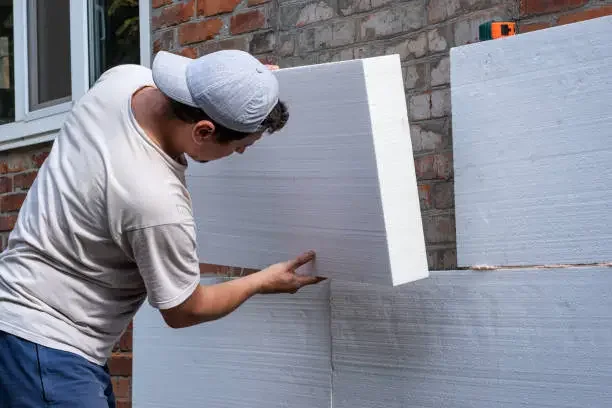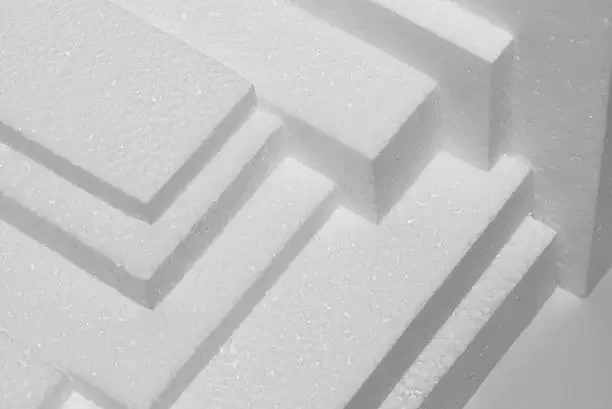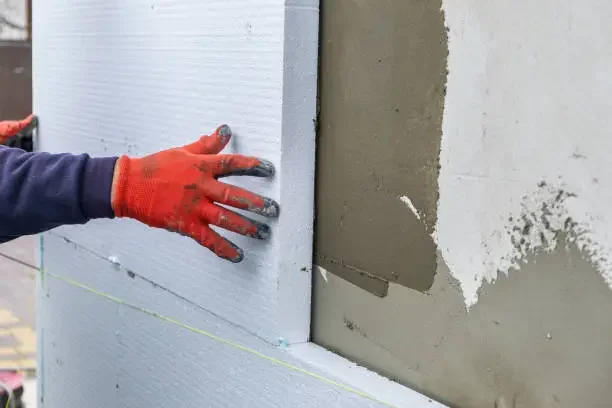In der Suche nach energiesparenden und umweltfreundlichen Häusern ist die Isolierung ein Schlüsselspieler bei der Kontrolle des Innenklimas und der Senkung des Energieverbrauchs. Eine Top-Wahl in der heutigen Wohnbauwelt ist expandiertes Polystyrol oder EPS. EPS-Platten gewinnen Popularität aufgrund ihrer großen Fähigkeit, Wärme zu blockieren, niedrigen Kosten und einer breiten Palette von Anwendungen in Wohnungsprojekten. Dieses Stück taucht ein, wie EPS-Isolierung in den Wohnbau passt, ihre Vorteile, verschiedene Arten, Anwendungen und Auswirkungen auf die Umwelt.

Die Rolle der Isolation bei der Energieeffizienz von Wohnungen
Gute Isolierung ist von entscheidender Bedeutung, um Häuser gemütlich zu halten, während weniger Energie verbraucht wird.
Warum Wärmedämmung wichtig ist Home Bau
Wärmedämmung reduziert den Wärmefluss zwischen Innen und Außen eines Hauses. Es hilft, das ganze Jahr über die richtige Innentemperatur zu halten. Häuser bleiben im Winter warm und im Sommer kühl. Dies erhöht den Komfort für diejenigen, die dort leben. Es senkt auch die Kosten für Heizung und Kühlung. Schlechte Isolierung kann thermische Überbrücken verursachen. Dies ist, wenn die Wärme durch schwache Stellen wie Wände oder Dächer ausrutscht. Dies führt zu verschwendeter Energie.
Schlüsselfaktoren, die die Energieleistung eines Gebäudes beeinflussen
Viele Dinge entscheiden, wie gut ein Haus Energie spart, darunter die gewählten Baustoffe, die Richtung, in die das Haus ausgerichtet ist, wo die Fenster platziert werden, wie die Luft durch sich bewegt und vor allem die Qualität der Isolierung. EPS-Boards stehen hier hervor. Sie haben einen hohen thermischen Widerstand, der als R-Wert bekannt ist. Dies hilft direkt Häusern, bessere Energieeffizienz zu erzielen.
Was sind EPS Boards und wie sie funktionieren
Expandiertes Polystyrol oder EPS ist ein leichter, aber harter Schaum, der häufig zur Isolierung von Gebäuden verwendet wird.
Zusammensetzung und Struktur von Expandiertem Polystyrol (EPS)
EPS stammt aus winzigen Polystyrolperlen. Diese werden mit Dampf aufgeblasen und in große Blöcke oder Blätter geformt. Die Perlen fangen Luft im Inneren, was EPS seine Isolierungskraft verleiht. Sein Design ist geschlossene Zelle. Jede Perle wirkt als winzige Barriere innerhalb des Bretts.
Thermische Leistungsmerkmale von EPS-Boards
EPS hat eine Wärmeleitfähigkeit zwischen 0,032 und 0,038 W/m·K, bezogen auf seine Dicke. Diese niedrige Zahl bedeutet, dass es großartig ist, Hitze zu verhindern, sich zu bewegen. Der R-Wert pro Zoll liegt zwischen R-3,6 und R-4,2. Das ist gut genug, um die meisten Hausbauregeln zu erfüllen oder zu schlagen.
Vergleich mit anderen gängigen Isolationsmaterialien
Beim Stapel gegen Glasfaser oder Mineralwolle hat EPS klare Vorteile. Es stört die Haut nicht, wenn Sie es installieren. Es hält besser gegen Feuchtigkeit als Glasfaser. Außerdem funktioniert es im Laufe der Jahre gut, ohne sich zu hängen oder zu packen. Polyurethanschaum könnte einen etwas höheren R-Wert pro Zoll haben. Aber EPS kostet weniger und ist freundlicher für den Planeten, da es weniger Energie braucht.
Vorteile der Verwendung von EPS-Boards im Hausbau
Die Verwendung von EPS-Platten bringt schnelle Gewinne während des Baus und langfristige Einsparungen während des Wohnens im Haus.
Verbesserung der Wärmebeständigkeit und Verringerung der Wärmeübertragung
EPS-Platten bilden einen festen Isolationsschild. Dies reduziert thermische Überbrücken über Teile wie Balken oder Stützen. Es erhöht den allgemeinen Schutz des Hauses. Weniger Wärme schleicht sich durch Wände, Dächer oder Böden ein oder heraus.
Langfristige Kosteneinsparungen durch geringeren Energieverbrauch
EPS hilft einem Zuhause, sich in kalten Monaten an der Wärme zu halten und in heißen Monaten an der Wärme abzuhalten. Dies bedeutet weniger Bedarf an Heiz- oder Kühlsystemen. Hausbesitzer sehen kleinere Energierechnungen über die Lebensdauer ihres Hauses.
Leichte und einfache Installationsmerkmale
EPS-Platten sind leicht, aber stark. Dies macht es einfach, sich auf einem Arbeitsplatz zu bewegen. Es werden keine schweren Werkzeuge benötigt. Sie können sie mit grundlegendem Getriebe schneiden, um seltsame Formen oder Ecken zu passen. Die Installation ist schneller und glatter als bei schwereren Optionen wie Betonblättern.
Feuchtigkeitsbeständigkeit und Haltbarkeit im Laufe der Zeit
Dank seiner geschlossenen Zellen-Konstruktion nimmt EPS nicht viel Wasser auf. Es bekämpft Schimmel und behält seine Isolierfestigkeit auch bei einiger Feuchtigkeit. Dies macht es perfekt für nasse Bereiche oder Kellerwände unter dem Boden.
Arten von EPS-Produkten für unterschiedliche Baubedürfnisse
EPS ist in verschiedenen Klassen erhältlich, um unterschiedlichen Bedürfnissen wie Brandsicherheit, grüne Ziele oder zusätzliche Isolierleistung gerecht zu werden.
Common Grade EPS für Standardanwendungen
Gewöhnlicher Grad EPS funktioniert gut für grundlegende Isolationsaufgaben. Kein zusätzlicher Brandschutz oder besondere Merkmale sind hier erforderlich. Es bietet soliden Wärmeschutz zu einem fairen Preis.
Flammschutzqualität für Brandschutzanforderungen
Flammschutz EPS hat Materialien hinzugefügt, um Feuer zu fangen oder Flammen zu verbreiten. Es erfüllt strenge Sicherheitsvorschriften für Feuer an Orten wie Wohnhäusern oder hohen Gebäuden.
Graphitqualität für verbesserte thermische Leistung
Graphitqualität EPS mischt sich in Kohlenstoffbits, die strahlende Wärme im Inneren der Platte zurückspringen. Dadurch erhöht sich der R-Wert um bis zu 20 % gegenüber normalem weißen EPS. Es ist eine Top-Wahl für super effiziente Häuser oder Designs, die auf Null-Energieverbrauch abzielen.
Umweltschutzgrad für nachhaltiges Gebäude
Diese Art konzentriert sich auf erdfreundliche Herstellungsmethoden. Es verwendet recycelte Materialien, isoliert aber immer noch gut. Es unterstützt grüne Baumaßnahmen wie LEED-Programme.
Carbon Black Grade für UV-Widerstand und Festigkeit
Carbon Black Grad fügt Sachen zur Bekämpfung von UV-Schäden hinzu, wenn sie vor der Abdeckung draußen gelassen werden. Es erhöht auch die Festigkeit. Dies ist ideal für Außenwand-Setups, die während des Baus ausgesetzt sitzen könnten.

Integration von EPS-Boards in verschiedene Teile eines Hauses
EPS-Platten passen je nach Konstruktionsbedürfnissen reibungslos in verschiedene Wohnbereiche.
Wandisolierungsanwendungen
Wände gewinnen viel von der stabilen Isolationsschicht, die EPS-Platten bieten.
Außenwandsysteme (EIFS)
Exterior Isolation Finishing Systems verwenden EPS-Platten unter Stuckschichten. Dies verleiht einen schönen Look und bietet gleichzeitig einen starken Wärmeschutz.
Interne Trennwände
Innere Wände brauchen nicht so viel Isolierung wie äußere. Dennoch können dünne EPS-Folien Lärm zwischen den Räumen reduzieren. Sie fügen auch einen kleinen Schub zur Energieeinsparung hinzu.
Lassen Sie uns von den Wänden zu den oberen Bereichen bewegen. Wärme kann viel entkommen oder eintreten, wenn diese Flecken nicht gut isoliert sind.
Dach- und Deckendämmungslösungen
Flache Dächer vs. Pitched Dächer Anwendungen
Bei flachen Dächern gehen dicke EPS-Platten oft unter schweren Beschichtungen über wasserdichte Schichten. Bei schrägen Dächern passen sie zwischen Balken oder unter der Oberschicht. Je nach lokalem Wetter können zusätzliche Feuchtigkeitssperren hinzugefügt werden.
Als nächstes gehen wir zum Bodenebene. Wärmeverlust kann hier ein großes Problem sein, wenn Böden oder Platten nicht richtig isoliert sind.
Bodenisolationstechniken mit EPS
Ob es sich um eine Platte auf dem Boden oder erhöhte Holzböden handelt, harter Schaum unter der Oberfläche verhindert, dass Kälte aufkriecht. Dadurch fühlen sich die Wohnräume das ganze Jahr über schöner an.

Umweltauswirkungen und Nachhaltigkeitsaspekte von EPS Boards
Neben nur gut zu arbeiten, gibt es einen anderen großen Faktor, über den man nachdenken muss. So passt EPS dazu umweltfreundliche Bautrends heute.
Recyclingfähigkeit und Wiederverwendbarkeit von Expandiertem Polystyrol
EPS kann an vielen Orten weltweit vollständig recycelt werden. Schrott aus dem Schneiden während der Einrichtung oder alte Platten aus Abreißen können in neue Gegenstände umgewandelt werden. Dies hält sie aus Müllmüllen.
Beitrag zu Green Building Zertifizierungen (z.B. LEED)
Die Auswahl von grünen Graden von Polystyrol kann Punkte für Programme wie LEED verdienen. Es zeigt einen kleineren CO2-Fußabdruck bei der Herstellung des Materials. Außerdem hilft es Häusern, effizienter im Laufe der Zeit mit einer besseren Isolationsleistung aus diesen intelligenten Wahlen zu laufen.
HUASHENG: Ein vertrauenswürdiger Lieferant von hochwertigen EPS-Produkten
Bei der Auswahl eines Lieferanten für eine konstante Qualität über viele Isolationstypen, HUASHENG glänzt als zuverlässiger Name. Bauherren weltweit vertrauen ihnen.
Übersicht über HUASHENGs Produktpalette und Fähigkeiten
HUASHENG hat fünf Hauptarten im Angebot: Common Grade Polystyrol Board (weiß), flammhemmende Polystyrol Board (weiß), Graphite Polystyrol Board (grau), Umweltschutz Polystyrol Board (weiß) und Carbon Black Polystyrol Board (schwarz). Jedes ist für spezifische Zwecke entwickelt. Diese reichen von einfachen Wandfüllstoffen bis hin zu leistungsstarken Außensystemen, die bei rauem Wetter höchste Wärmebeständigkeit benötigen.
Maßgeschneiderte REPS-Lösungen, die auf die Projektanforderungen zugeschnitten sind
HUASHENG entwickelt auch maßgeschneiderte REPS-Plattenoptionen, um dem zu entsprechen, was Kunden verlangen. Dies gewährleistet eine perfekte Übereinstimmung, unabhängig vom Fokus – sei es die Einhaltung der Brandsicherheitsregeln oder eine lange Haltbarkeit gegen UV-Schäden draußen. Diese Boards halten, auch wenn sie eine Weile lang ausgesetzt sind, bevor das endgültige Cover weitergeht. Dies ist alles sorgfältig mit allen Beteiligten geplant. Die Teamarbeit hält die Dinge reibungslos voran und bleibt auf dem richtigen Weg mit den größeren Zielen für das Projekt. Es ist ein durchdachter Prozess, der für alle Parteien funktioniert und die Arbeit richtig erledigt.
Häufig gestellte Fragen:
Q1: Was macht expandiertes Polystyrol besser als herkömmliche Glasfaser-Isolierung?
A: EPS-Platten sind viel besser im Umgang mit Feuchtigkeit. Sie brechen nicht im Laufe der Zeit ab wie Glasfaser, wenn es nass wird. Sie behalten ihre Form, ohne zu saggen. Sie sind auch unter Druck stärker, was unter Böden oder Dächern hilft. Außerdem sind sie einfacher und sauberer zu setzen, da sie die Haut nicht jucken oder reizen, wie Glasfasern oft tun.
Q2: Sind Graphit-verbesserte EPS-Platten wirklich die zusätzlichen Kosten wert?
A: Ja, das sind sie. Graphitqualitäts-Panels erhöhen R-Werte sehr, indem sie strahlende Wärme im Inneren zurückspringen. Also machen dünnere Blätter die gleiche Arbeit wie dickere reguläre. Dies spart Platz, was in engen Wandräumen praktisch ist, die oft in super effizienten Heimdesigns gesehen werden, die jetzt überall auftauchen.
Q3: Kann ich Reststücke nach der Installation der Isolierung meines Hauses recyceln?
A: Sicherlich nehmen viele nahe gelegene Recyclingplätze saubere expandierte Polystyrol-Abfälle, einschließlich Bits, die während der Einrichtung abgeschnitten werden. Dies reduziert den Müll auf Deponien und unterstützt die Idee der Wiederverwendung von Materialien, ein Ziel, das heute in umweltfreundlichen Plänen auf der ganzen Welt weit verbreitet wird.






